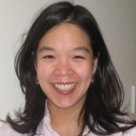
Insights from Dr Sandy Jusuf on meeting CPD requirements
5 Dec 2023
CPD
I obtained Fellowship this year and am currently working two days per week in the public system in a community CYMHS team and two days privately, with a clinical interest in autism spectrum disorder.
At the beginning of the year, I perused the CPD Program Guide to better understand the CPD requirements and activities I needed to complete. I particularly found the “Summary Table of Activities” in each section helpful as it highlighted activities which were already part of my clinical practice irrespective of CPD requirements.
I utilised Template 2 for my Professional Development Plan. I liked how it had a calendar at the bottom of the plan and my aim was to complete roughly 5 hours of CPD per month.
Peer review groups (PRGs) are a great opportunity to discuss difficult cases and receive advice from peers in a non-judgemental forum. Furthermore, I have been very fortunate to receive individual supervision in addition to my PRGs, so it was easy to complete section 2 “Formal Peer Review Activities” of the CPD component.
Section 4 “Self-guided learning” can be fulfilled by attending journal clubs, supervising registrars and completing certain mandatory training components to name a few.
Most of us will comfortably complete more than 50 hours of CPD each year. The difficulty lies in keeping track of what we have done, and a record of the evidence required for CPD. The trick for me was preparation: spending a few hours at the beginning of the year on planning and writing my PDP helped me to achieve my CPD requirements more smoothly.
There are a lot of activities which count towards CPD, including the non-medical expert CANMEDS domains (research, advocacy, leadership). I plan to do different CPD activities each year to continue stretching my abilities and to ultimately improve the outcome for my patients.
More news & views
Examiners can earn CPD points by attending calibration sessions and marking exams.
Qualified privilege covering Australian Peer Review Groups has momentarily expired. An application f...
We are pleased to introduce a new category, Wellbeing education, to the 2025 CPD program.